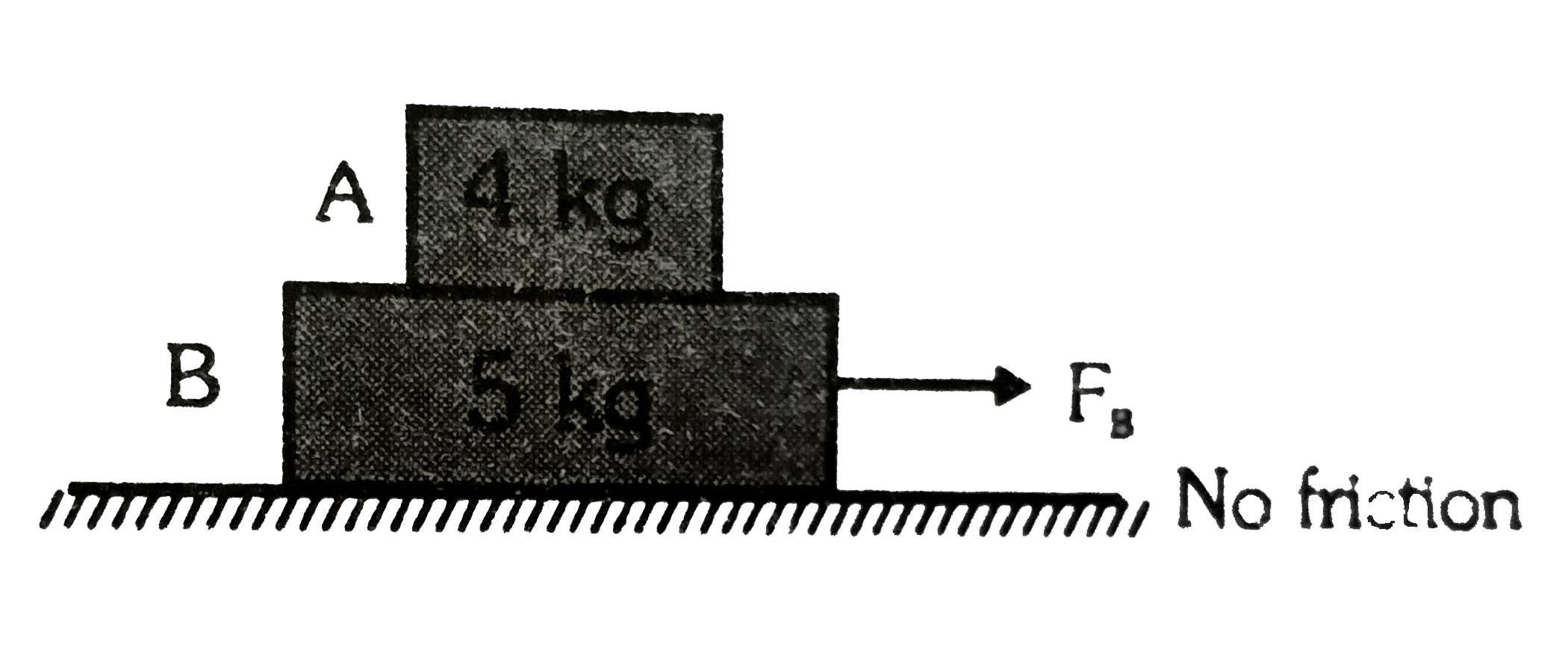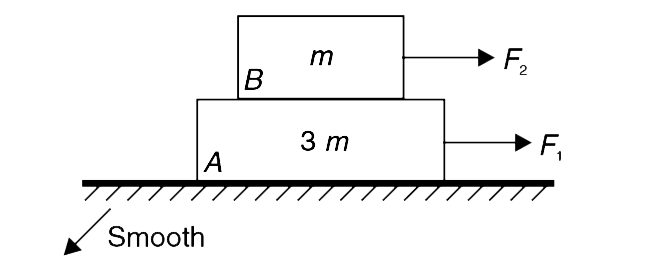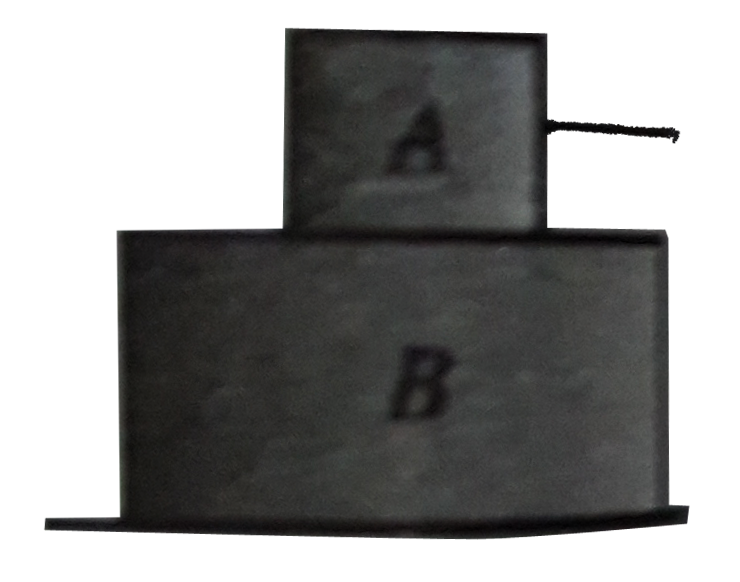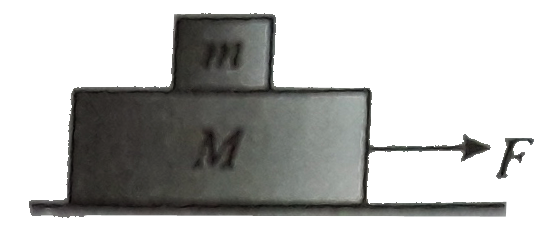A block the of mass 4kg is placed on another block of mass 5kg and the block B rests on a smooth horizontal table for sliding the block A on B a horizontal force 12N is required to be applied force on it How much maximum horizontal force can be applied on 'B' s that both A and B move together? Also find out the accleration proudced by this force
 .
.
Here , m1=4kg,m2=5kg.
Force applied on A , f = 12 N ,
This must atleast be equal to force of kinetic friction applied on A bt B
f=fk=μkR=μkm1g ltbr gt12=fk=μk×4g∴μk=124g=3g
As block B is on smooth surface , therefore to move A and B togrther , (maximum) force F required to be applied on B = frictional force applied on a by A
F=3g(4+5)g=27N
 .
.
Similar Questions
12N of force required to be applied on A to slip on B. Find the maximum horizontal force F to be applied on B so that A and B moves together.
 View Solution
View SolutionBlock B of mass m has been placed on block A of mass 3 m as shown. Block A rests on a smooth horizontal table. F1 is the maximum horizontal force that can be applied on the block A such that there is no slipping between the blocks. Similarly, F2 is the maximum horizontal force that can be applied on the block B so that the two blocks move together without slipping on each other. When F1andF2 both are applied together as shown in figure.

(a) Find the friction force acting between the blocks.
(b) Acceleration of the two blocks.
(c) If F2 is decreased a little, what will be direction of friction acting on B.View Solution
Knowledge Check
- Question 1 - Select One
A 4 kg block A is placed on the top of 8 kg block B which rests on a smooth table.

A just slips on B when a force of 12 N is applied on A. Then the maximum horizontal force F applied on B to make both A and B move together, isA12 NB24 NsC36 ND48 N - Question 2 - Select One
A block A of mass 2kg is placed over smooth block B of mass 4kg which is placed over a smooth horizontal floor The coefficient of friction between A and B is 0.4 when a horizontal forces of magnitude 10N is applied on A the acceleration of block of A and B are
 A1ms−2and2ms−2,respectivelyB5ms−2and2.5ms−2,respectivelyCBoth the block will moves together with acceleration 1/3ms−2DBoth the block will moves together with acceleration 5/3ms−2
A1ms−2and2ms−2,respectivelyB5ms−2and2.5ms−2,respectivelyCBoth the block will moves together with acceleration 1/3ms−2DBoth the block will moves together with acceleration 5/3ms−2 - Question 3 - Select One
A force of 75 N is applied to a block of mass 25 kg, resting on a smooth horizontal surface. In how much time, the block will acquire a speed of 12 m/s?
A1 secB2secC4 secD8 sec
The coefficient of static friction between the two blocks shown in figure is μ and the table is smooth. What maximum horizontal forced F can be applied to he block of mass M so that the block move together?
 View Solution
View SolutionA rope of mass 0.5kg is pulling a block of mass 10kg under the action of force of 31.5N If the block is resting on a smooth horizontal surface calculate the force of reaction exerted by the block on the rope .
View SolutionA 4.0 kg block is put on top of a 5.0kg block. In order to cause the top block to slip on the bottom one, a horizontal force of 12N must be applied to the top block. Assuming a friction less table the maximum horizontal force F which can be applied to the lower block so that the blocks, will move together should be
 View Solution
View SolutionA block of massm is placed on another block of mass M which itself is lying on a horizontal surface .The coefficient of friction between two blocks is μ1and that between the block of mass M and horizontal surfece is μ2 What maximum horizontal force can be applied to the lower block move without separation?
 View Solution
View SolutionTwo block A and B of masses 5 kg. and 3 kg. respectively rest on smooth horizontal surface with B over A. The coefficient of friction between A and B. 0.5 the maximum horizontal force that can be applied to A so that there will be motion of A and B without separation is :-
View Solution

